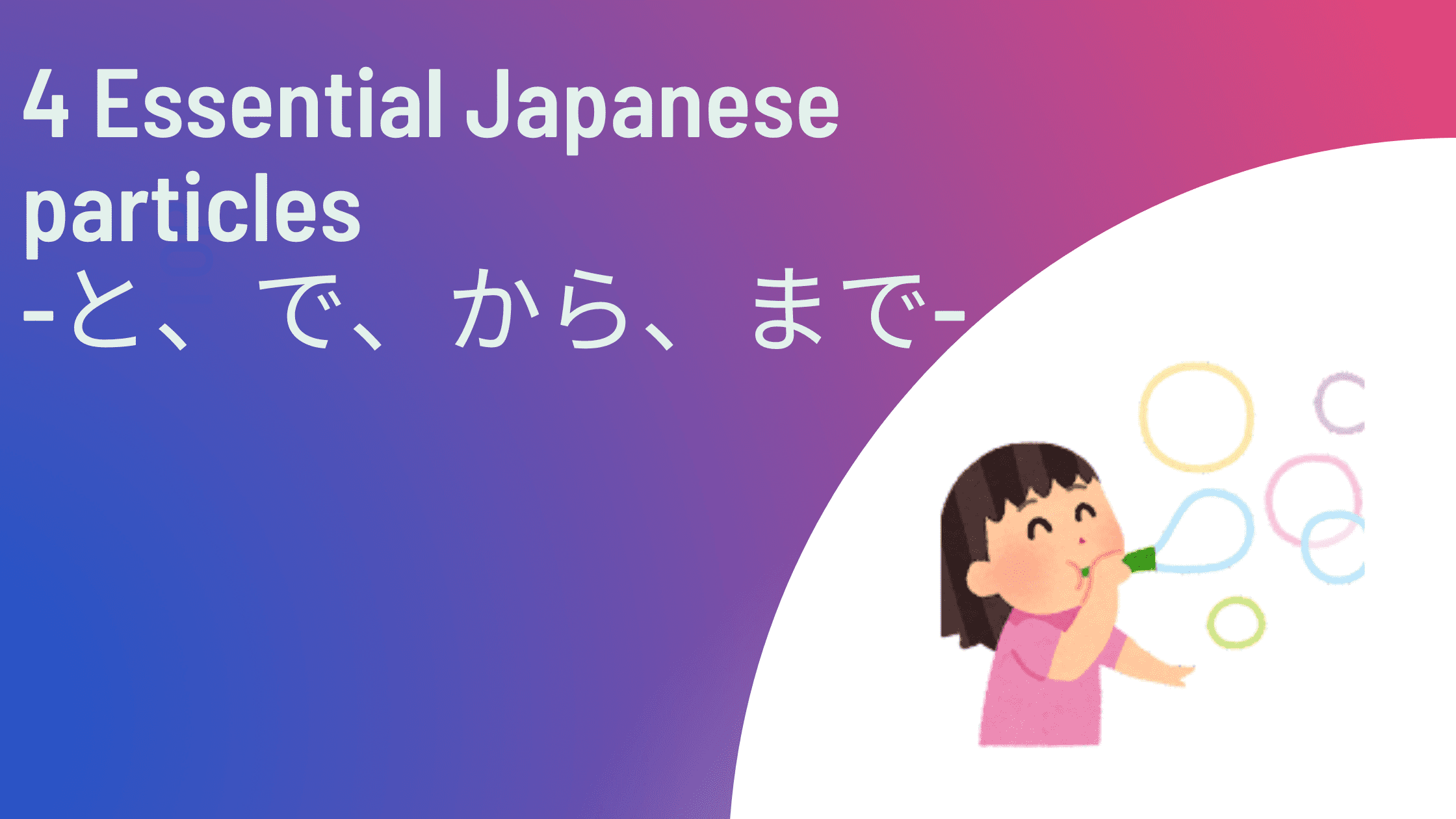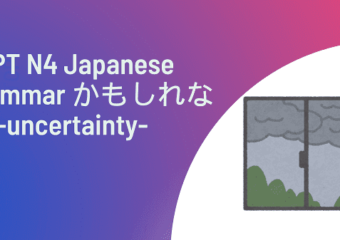I wrote about 5 essential Japanese particles, は, が, を, に, へ in the previous article.
In this article, I will teach you another 4 essential Japanese particles, と, で, から, まで.
If you haven’t read the previous article, please read it first.
Let’s learn Japanese essential particles part 1

The free trial class online
We offer online classes and in person classes
と
Let’s see the rule of と.
- Affecting someone
- Doing something with someone
- Quote
Affecting someone

と+someone/something
Can you get married alone?
Probably, not.
When you get married, you need another person, right?
Like this, when you do something that you can’t do alone, we use と.
Let’s see examples.
Japanese
日本は むかし アメリカと たたかいました。
English
A long time ago, Japan fought America.
If you fight, you need an opponent.
When we mention who if fighting, we use と+someone/something.
Here is an other example.
Japanese
かのじょと わかれました。
English
I broke up with my girlfriend.
When you break up, there must be someone, so we use と+someone/something to mention who I broke up with.
Doing something with someone
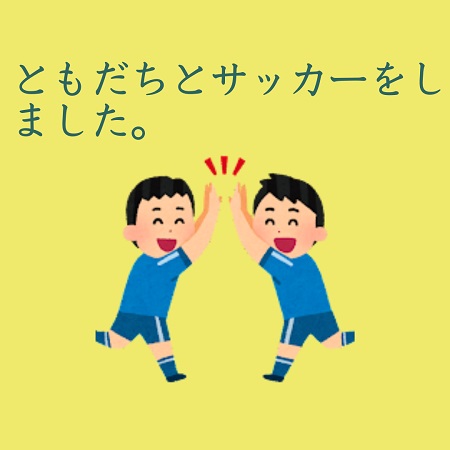
と+someone
When you do something with someone, we use と+someone.
I give you some examples.
Japanese
かぞくと きょうとへ いきました。
English
I went to Kyoto with my family.
Japanese
ともだちと サッカーを しました。
English
I played soccer with my friends.
Like these examples, you can mention who you did it with by using と.
Quote/Content
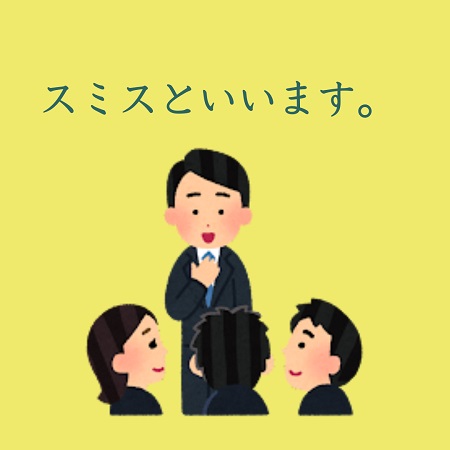
Plain form + と
If you don’t know what plain form is, please read this article.
Let’s learn Japanese plain form
We use と to tell what we say.
Let’s see some examples.
Japanese
わたしは スミスと いいます。
English
My name is Smith.
Literally, わたしはスミスといいます means I say I am Smith.
と is often used with say, call, think and so on.
Japanese
かれは こないと おもいます。
English
I don’t think he’s coming.
で
I will explain two rules of で.
- Place
- Means/Method
Place
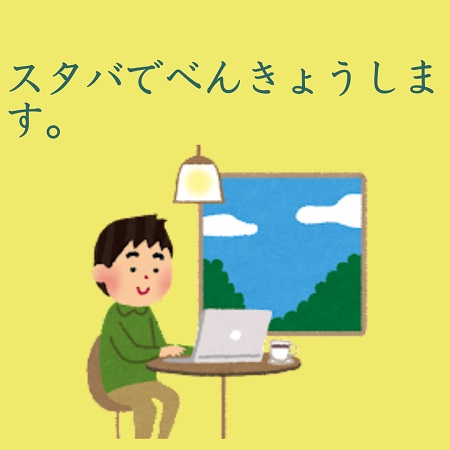
Place+で+action verb
We use で to mention where you do it.
For example,
Japanese
スタバで べんきょうします。
English
I study at Starbucks.
We discussed about を in the last article.
Let’s learn Japanese essential particles part 1
You may want to know what the difference is between うみをおよぐ and うみでおよぐ.
を expresses “moving”. Probably, they are going somewhere.
If you say さかなが うみを およぐ, I imagine the fish swims in the ocean freely.
On the other hand, if you say きょうは うみで およぎました, I imagine you enjoyed swimming in the sea near the beach.
It’s hard for Japanese learners to understand this concept, but please don’t be afraid.
Native Japanese speakers will understand what you mean.
It’s important to use what you learn and communicate with people actively.
means/method
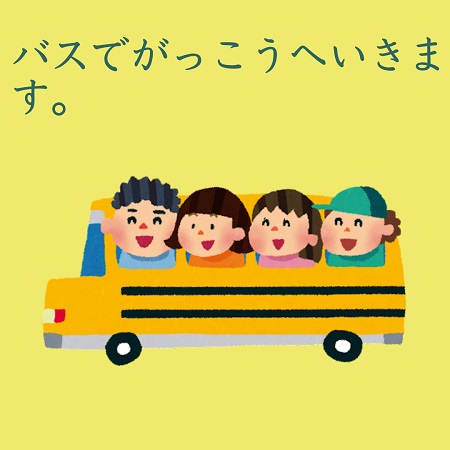
We use で to explain what you use.
Let’s see some examples.
Japanese
バスで がっこうへ いきます。
English
I go to school by bus.
You use a bus to go to school.
Therefore, you say バスで 学校へ いきます.
NOTE
*If you say “by walKing”, you would say あるいて not あるいで.
Let’s see another example.
Japanese
おはしで おすしを たべます。
English
I eat sushi with chopsticks.
You use chopsticks to eat sushi, so you say おはしで おすしを たべます.
Japanese
にほんごで これは なんですか。
English
What do you say this in Japanese?
It means how do you say this by using Japanese, so you say にほんごで これは なんですか.
から
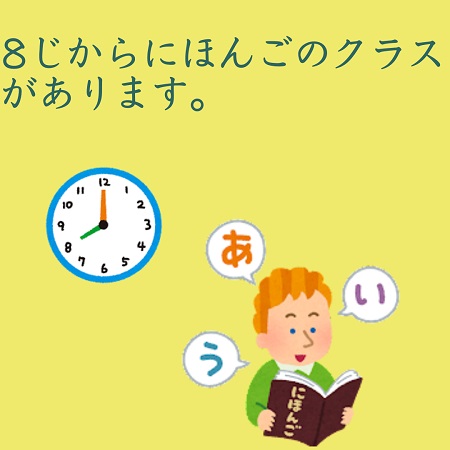
から also has many meanings, but I will only teach you “starting point” in this article.
Japanese
にほんから カナダへ きました。
English
I came to Canada from Japan.
In this case, Japan is the starting point while Canada is the destination.
Let’s see another example.
Japanese
きょうは 8じから にほんごの クラスが あります。
English
I have Japanese class today from 8.
This sentence emphasizes the class starts from 8 and you will study for several hours.
You can also say that 8じに にほんごの クラスが あります.
It just mentions the specific time class starts, and that’s it.
Japanese
うちから がっこうまで あるいて どれくらい かかりますか。
English
How long does it take time from your house to school by bus?
What is まで?
Let’s learn what まで is next.
まで

まで is an ending point like destination.
Japanese
うちまで きょうそうだ。
English
Let’s race to home.
うち is their destination, so it says うちまで
Japanese
きょうは 8じまで クラスが あります。
English
I have class until 8.
8じ is the time when the class ends, so it says 8じまで.
Japanese
シャボンだまとんだ。やねまで とんだ。
English
Soap bubbles reach to the roof.
There is a Japanese song named シャボンだま.
It says (シャボンだまが)やねまで とんだ.
Probably, the soap bubbles burst when they reached to the roof.
Conclusion
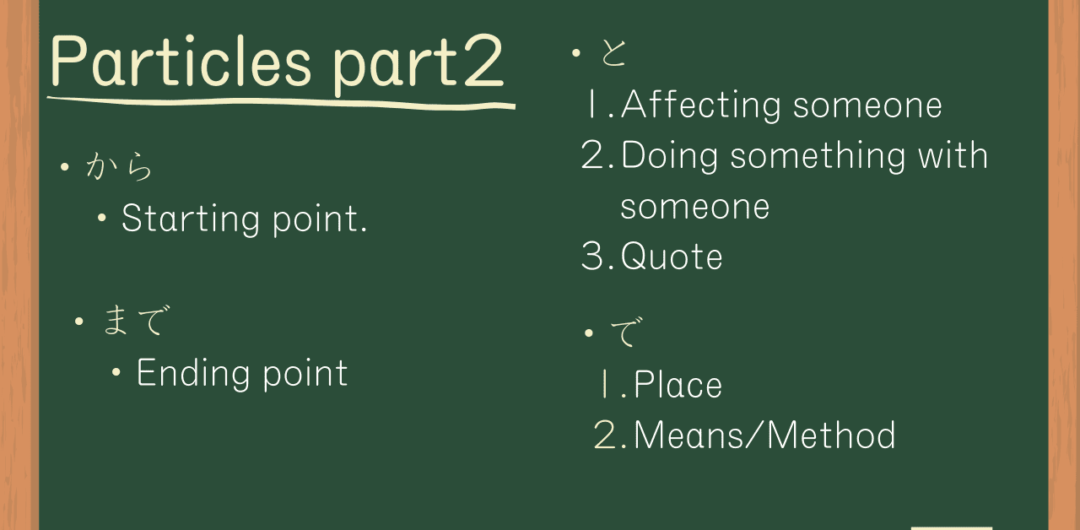
These particles are essential to learning Japanese.
That’s why I recommend practicing a lot and understand Japanese concepts.
Exercise
1. わたしはともだち(①)うみ(②)いきました。
2. 人は かれ(①)スーパーヒーロー(②)よびます。
3. 9じ(①)あさの8じ(②)ねました。
4. 山(①)にほんご(②)なんですか。
5. トロント(①)ニューヨーク(②)バス(③)14じかんくらいです。
6. なん(①)がっこう(②)いきますか。-バスでいきます。
7. わたしはかのじょ(①)ロンドン(②)いきました。
8. て(①)パン(②)たべます。
9. あした( )なつやすみがはじまります。
10. とりが空( )とんでいます。
Answer
1. わたしはともだち(と)うみ(へ/に)いきました。
2. 人は かれ(を)スーパーヒーロー(と)よびます。
3. 9じ(から)あさの8じ(まで)ねました。
4. 山(は)にほんご(で)なんですか。
5. トロント(から)ニューヨーク(まで)バス(で)14じかんくらいです。
6. なん(で)がっこう(へ)いきますか。-バスでいきます。
7. わたしはかのじょ(と)ロンドン(へ/に)いきました。
8. て(で)パン(を)たべます。
9. あした(から)なつやすみがはじまります。
10. とりが空(を)とんでいます。
If you have questions about this exercise, please contact me or leave a comment below.
If you’d like to learn more Japanese, please feel free to contact me.
I teach Japanese in-person or online.
You can also learn Japanese on my Instagram page.

The free trial class online
We offer online classes and in person classes
